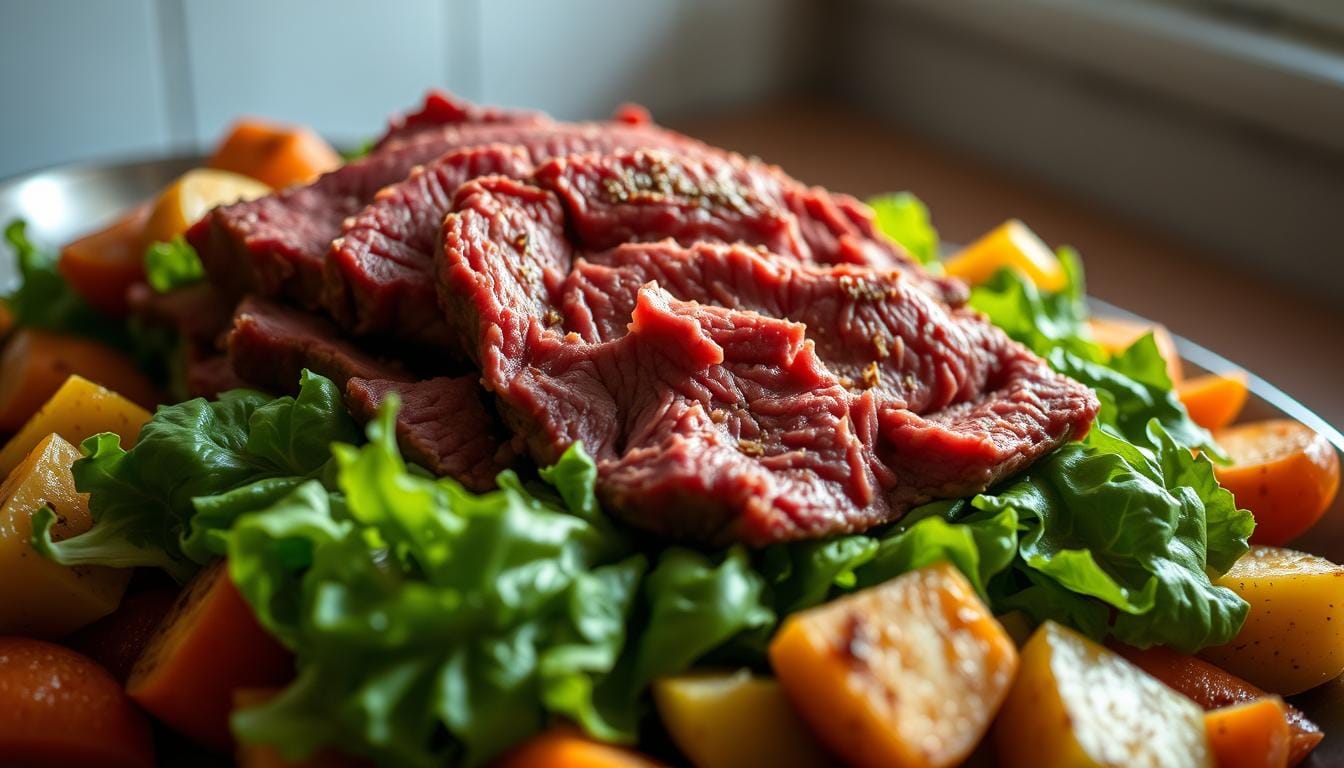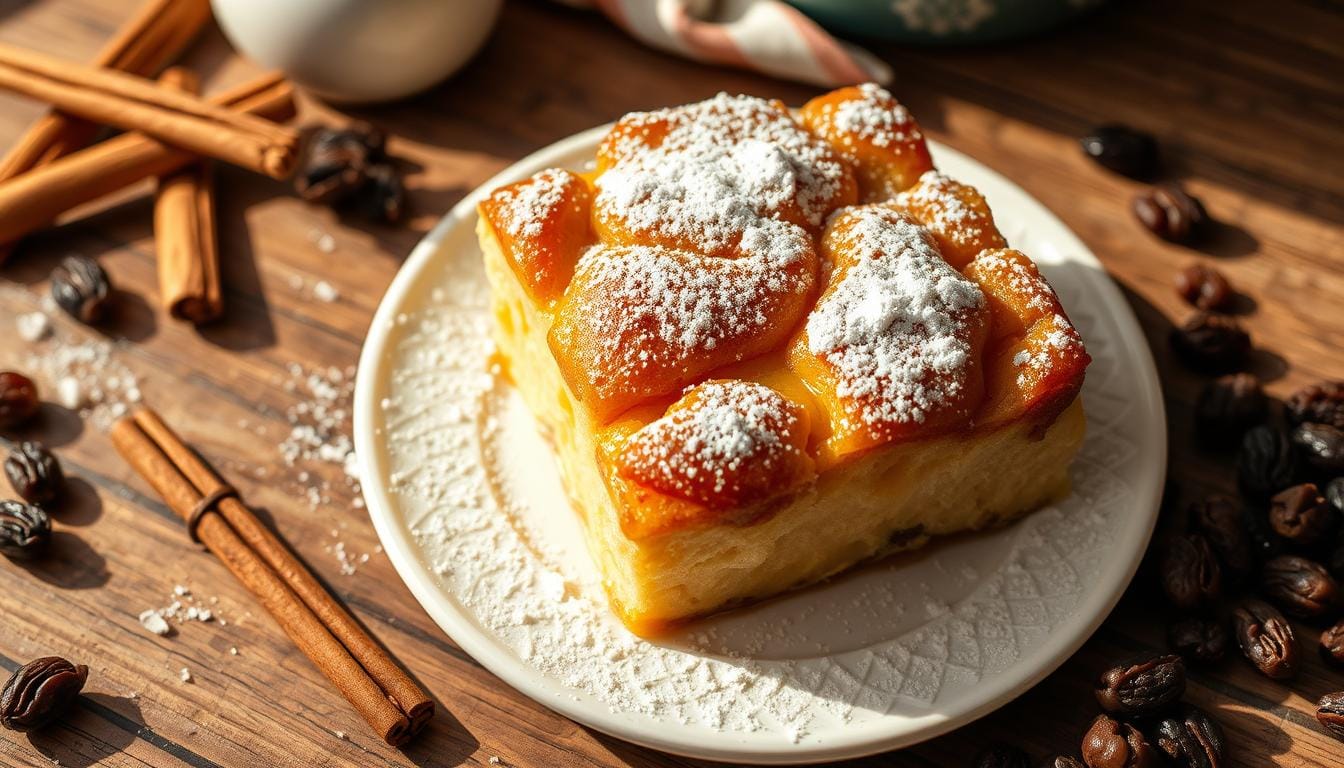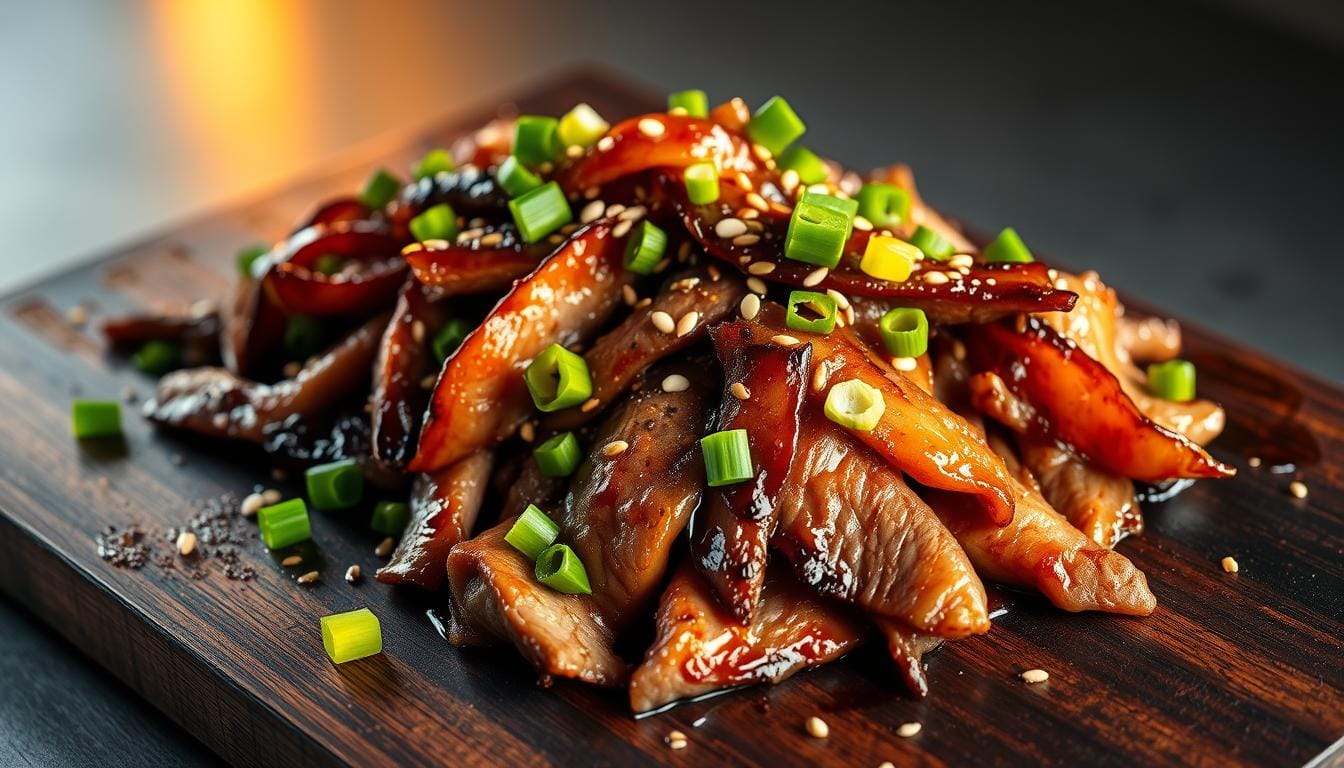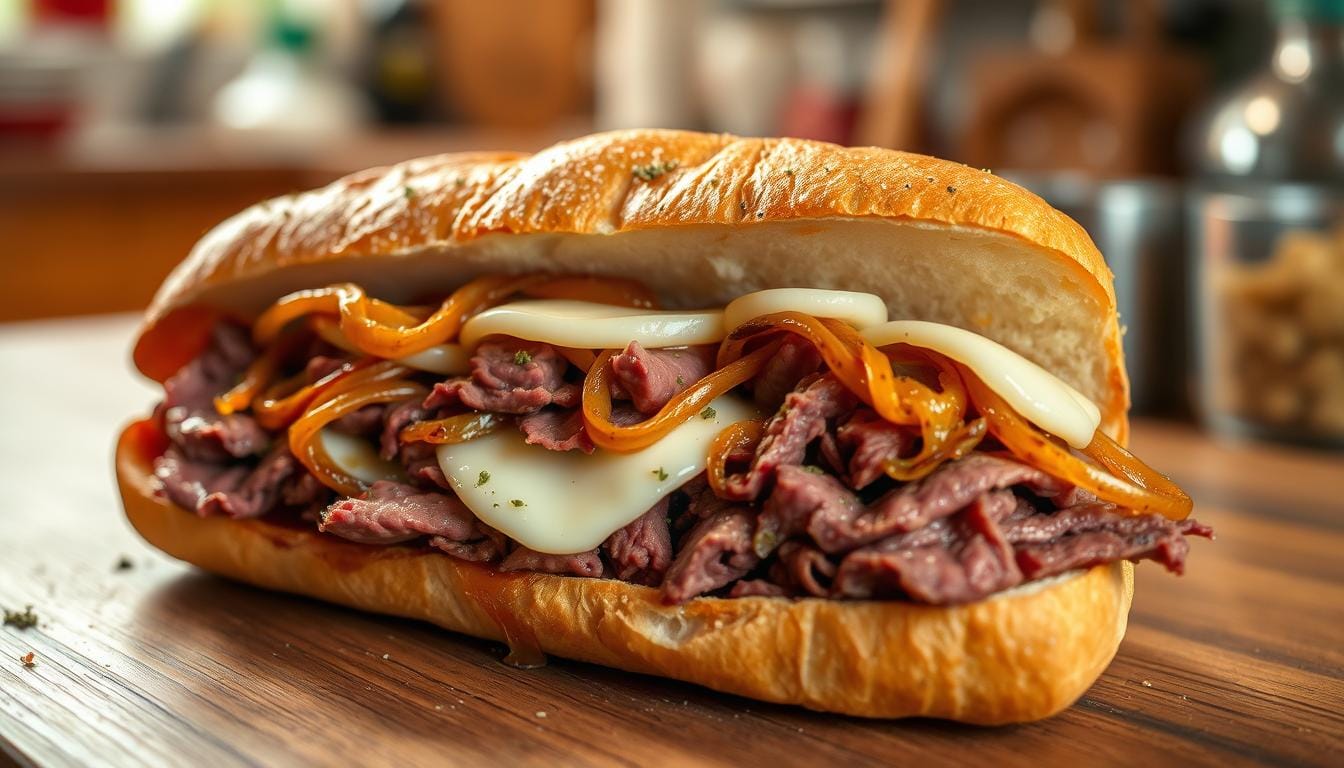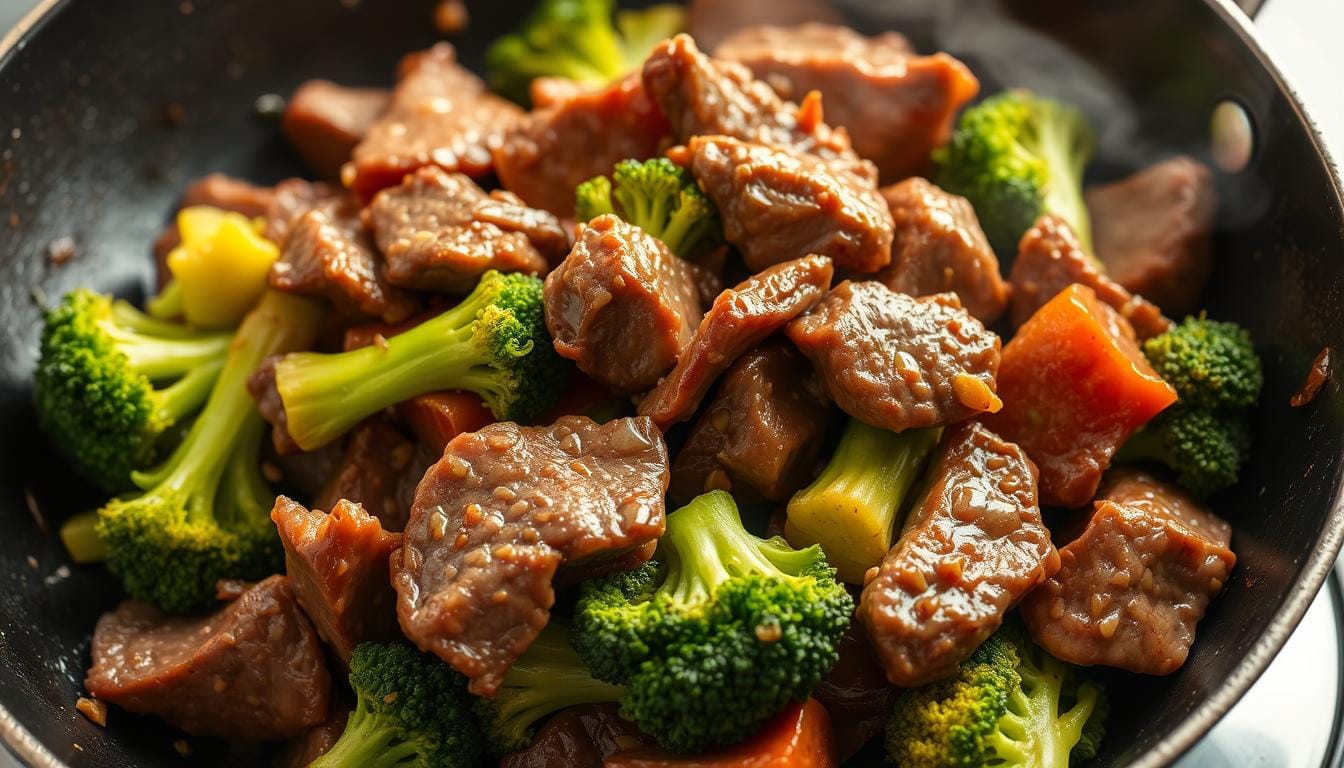Simple Corned Beef and Cabbage Recipe
Table of Contents
Every St. Patrick’s Day, our kitchen turns into a celebration of Irish food. The smell of slow-cooked corned beef and cabbage fills our home. It’s more than a meal; it’s a tradition that brings us together.
This corned beef and cabbage recipe is perfect for anyone who loves good food. It’s great for big gatherings or a quiet family dinner. You’ll love the authentic Irish taste it brings to your table.
We make this classic dish easy for everyone to make. It’s a journey of flavors, tradition, and simplicity. Get ready to enjoy a delicious meal.
Introduction to Corned Beef and Cabbage
Corned beef and cabbage is a favorite St. Patrick’s Day meal in America. It’s not just from Irish cuisine, but its story is complex and interesting.
Irish immigrants brought their food traditions to the U.S. in the 19th century. They changed American food culture with their rich heritage.
Brief History of the Dish
In Ireland, pork was the main meat for families. But in America, beef was cheaper and easier to find. This change led to a new dish:
- Beef replaced pork in traditional recipes
- Corning process became a method of meat preservation
- Cabbage was an affordable and nutritious vegetable
Popularity in American Culture
The dish became a symbol of Irish-American identity. By the late 19th and early 20th centuries, it became a St. Patrick’s Day tradition in the U.S.
Today, restaurants and home cooks love this hearty meal. It’s seen as a mix of cultures and creativity. Every year, millions enjoy it to celebrate Irish heritage or just for the taste.
Ingredients You Will Need
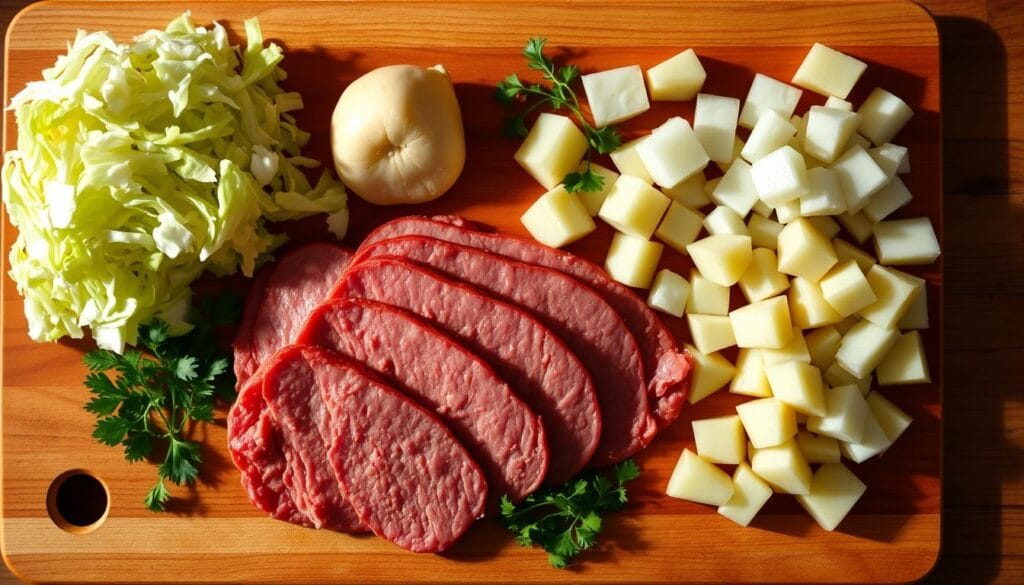
To make a real corned beef and cabbage dish, you need the right ingredients. Start by picking the best parts for a meal that will be remembered.
Choosing the right beef is key for a great corned beef. The beef brisket is the main ingredient. It’s known for its rich taste and tender texture.
Essential Ingredients for Your Dish
- Beef brisket (4-5 pounds)
- Pickling spices blend
- Kosher salt
- Fresh cabbage heads
- Whole black peppercorns
- Bay leaves
Flavor-Enhancing Optional Add-ins
Make your corned beef even better with some extra ingredients. Adding Guinness beer gives a deep, rich flavor that makes the dish more complex.
| Ingredient | Flavor Profile | Recommended Quantity |
|---|---|---|
| Guinness Beer | Malty, robust | 1 cup for braising |
| Whole Garlic Cloves | Aromatic, pungent | 4-5 cloves |
| Fresh Thyme | Earthy, herbaceous | 2-3 sprigs |
For pickling spices, choose a mix with mustard seeds, coriander, allspice, and peppercorns. These spices add traditional Irish-American flavors to your dish.
Preparing the Corned Beef
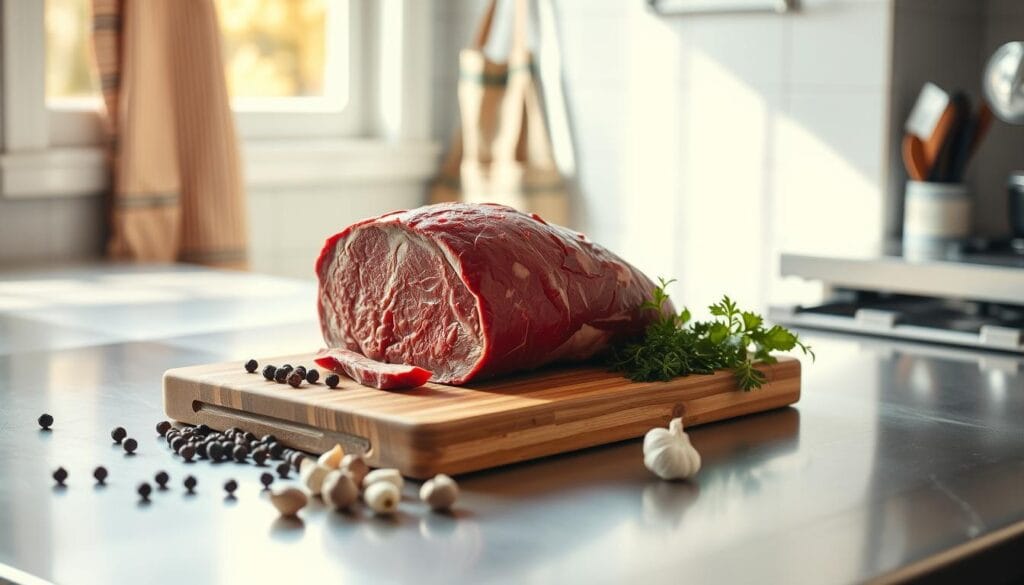
Starting with the right ingredients is key to making great corned beef. You’ll need a top-notch beef brisket and know how to brine it. This is the first step to a tasty meal.
When picking your beef brisket, look for one with lots of marbling and even thickness. The meat’s quality greatly affects the taste and tenderness of your corned beef.
Selecting the Perfect Beef Brisket
- Choose a beef brisket with even marbling
- Aim for a cut between 3-5 pounds
- Look for bright red meat with minimal discoloration
- Select a cut with a thin fat cap for optimal flavor
The Brining Process
Brining turns a regular beef brisket into a flavorful corned beef. The magic happens with pickling spices, which add deep, rich flavors. You can make your own pickling spices with:
- Whole black peppercorns
- Mustard seeds
- Coriander seeds
- Bay leaves
- Crushed red pepper flakes
To brine your beef brisket, you’ll need a big container, kosher salt, and your pickling spice mix. The brining process takes 5-7 days. Patience is key to developing those signature corned beef flavors.
Cooking Methods for Corned Beef
Choosing how to cook corned beef is key. Different methods change the taste and texture of your meal. Let’s look at three popular ways to make your boiled dinner tasty and easy.
Stovetop Traditional Method
The stovetop method is a timeless choice for cooking corned beef. You’ll need a big pot and some patience. Start by covering the meat with water and boil it gently. Then, lower the heat and simmer for about 50 minutes per pound.
- Use a heavy-bottomed pot for even heat distribution
- Keep liquid at a low simmer to prevent tough meat
- Check water levels periodically during cooking
Slow Cooker Recipe Technique
A slow cooker recipe is great for those who want easy cooking. Put your corned beef in the slow cooker with enough liquid to cover it. Cook on low for 8-10 hours for tender and flavorful meat.
- Ideal for busy home cooks
- Guarantees consistently moist meat
- Minimal supervision required
Instant Pot Method
The Instant Pot is perfect for quick cooking. It cooks corned beef fast while keeping it moist and flavorful.
- Cook time reduced to 90 minutes
- Retains meat’s natural juices
- Perfect for last-minute meal planning
Each cooking method has its own benefits. Pick the one that fits your schedule and kitchen best for a delicious corned beef meal.
Preparing the Cabbage and Vegetables
Choosing the right vegetables is key to a great side dish for corned beef. The right cabbage, potatoes, and carrots can make your meal unforgettable.
When picking cabbage, look for firm, compact heads with bright green leaves. Fresh cabbage adds the best texture and taste to your dish.
Selecting the Best Cabbage
Not all cabbages are the same. For this dish, green cabbage is best because it’s sturdy and holds up well when cooked. Here’s what to look for:
- Choose cabbage heads with tight, unblemished leaves
- Avoid cabbages with yellow or wilted outer leaves
- Look for compact, heavy heads indicating freshness
Seasoning Your Vegetables
Potatoes and carrots need special care to match the corned beef. Simple seasonings can make them stand out.
Classic seasonings include:
- Kosher salt and freshly ground black pepper
- Dried thyme
- Garlic powder
- Fresh parsley for garnish
When cutting potatoes and carrots, make sure they’re all the same size. This ensures they cook evenly and soak up flavors well.
Pro tip: Roasting potatoes and carrots with olive oil can give them a tasty, caramelized outside and a soft inside.
Serving Suggestions
Your corned beef and cabbage is ready to be the star of your St. Patrick’s Day meal. Presentation matters as much as taste. It turns a simple boiled dinner into a memorable culinary experience.
Traditional Accompaniments
Classic boiled dinner sides enhance the flavors of your corned beef and cabbage. Consider these traditional options:
- Hearty Irish soda bread
- Creamy mashed potatoes
- Whole grain mustard
- Horseradish sauce
Creative Presentation Twists
Make your St. Patrick’s Day meal stand out with these innovative serving ideas:
- Slice corned beef against the grain for tender pieces
- Create a colorful platter with vibrant vegetable arrangements
- Garnish with fresh parsley for a pop of green
| Serving Style | Description | Difficulty |
|---|---|---|
| Classic Platter | Meat centered with vegetables surrounding | Easy |
| Rustic Carving Board | Casual, family-style presentation | Medium |
| Deconstructed Plate | Artistic separation of ingredients | Advanced |
Remember, the best boiled dinner is one served with love and creativity. Experiment and make this traditional St. Patrick’s Day meal your own!
Tips for the Perfect Corned Beef and Cabbage
Mastering your corned beef and cabbage recipe takes focus and insider tips. It’s all about the details of cooking this classic dish. From picking the right ingredients to mastering your cooking skills, every step is crucial for a tasty meal.
When cooking your corned beef and cabbage, don’t overcook the meat. Overcooking makes it tough and dry. Use a meat thermometer to check the internal temperature. Aim for 145°F for medium-rare. Also, slice the meat against the grain for tenderness and easier chewing.
Common Mistakes to Avoid
One common mistake is not letting the meat rest long enough after cooking. Let your corned beef rest for 10-15 minutes before slicing. This step ensures the meat stays moist and flavorful. Skipping it can make the meat dry and less tasty.
Leftover Ideas for Your Meal
Turn your leftover corned beef into tasty new dishes. Make classic Reuben sandwiches with rye bread, Swiss cheese, and sauerkraut. Hash is another great option – chop the meat, mix with potatoes, and fry until crispy. These ideas help you use up every bit of your corned beef and cabbage.
FAQ
What is corned beef and cabbage?
Corned beef and cabbage is a dish often eaten on St. Patrick’s Day. It has slow-cooked beef brisket cured in salt brine. It’s served with boiled cabbage, potatoes, and carrots. This dish is more American than Irish.
How long does it take to cook corned beef and cabbage?
Cooking time varies by method. In a slow cooker, it’s 8-10 hours on low. Stovetop cooking takes 3-4 hours. An Instant Pot cooks it in about 90 minutes.
Can I make corned beef and cabbage ahead of time?
Yes, it tastes better after flavors meld. Prepare it a day before and reheat. It keeps well in the fridge and reheats well.
What cut of beef should I use for corned beef?
Use beef brisket for the best results. Choose a flat-cut brisket for even slices. It’s leaner and tender.
Can I make this recipe in a slow cooker?
Yes, slow cookers are great for corned beef and cabbage. They make the meat tender and flavors rich. Just put everything in the slow cooker and cook on low for 8-10 hours.
Is corned beef and cabbage healthy?
It’s tasty but high in sodium and fat. The veggies add vitamins and fiber. For a healthier version, trim fat and use lean cuts.
What spices are typically used in corned beef?
Bay leaves, peppercorns, and mustard seeds are common. Some add Guinness beer or beef broth for extra flavor.
How should I store leftover corned beef and cabbage?
Store leftovers in an airtight container in the fridge for 3-4 days. Keep meat and veggies separate. Reheat with broth or water to keep it moist.

